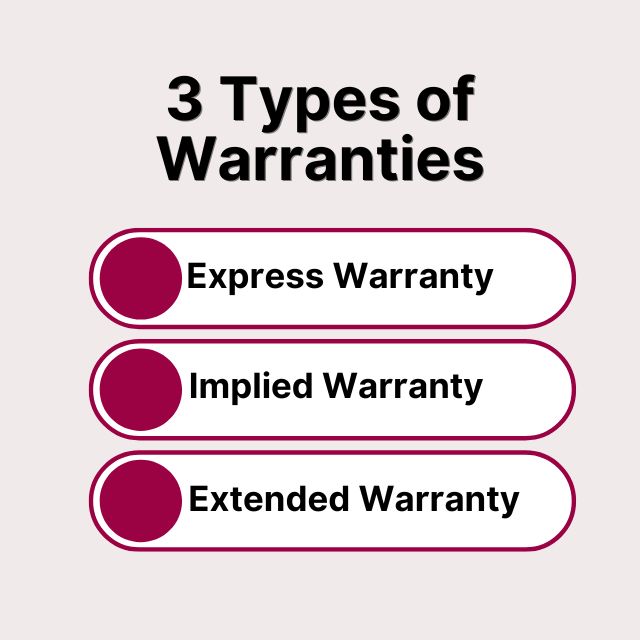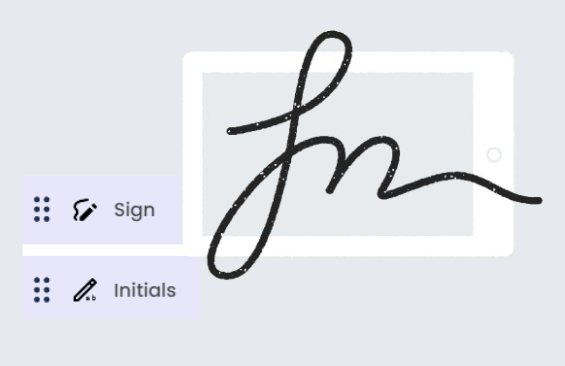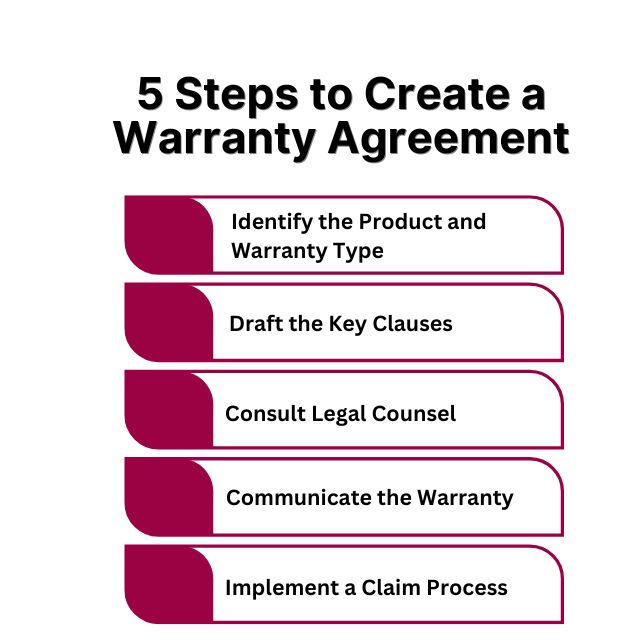Creating a warranty agreement is a crucial step in protecting both the seller and the buyer. A well-drafted warranty agreement clearly outlines the responsibilities of the seller regarding the repair, replacement, or maintenance of the sold product. This article provides a comprehensive guide on how to create a warranty agreement, detailing all the essential clauses that should be included to ensure clarity, fairness, and legal compliance.
Creating a warranty agreement is vital for protecting both sellers and buyers, as it defines the seller’s responsibilities for repair, replacement, or maintenance of a product. Key clauses in a warranty agreement include definitions, which clarify terms like “Warranty Period” and “Repair”; warranty coverage, which details the conditions and remedies offered; exclusions and limitations, which specify what is not covered; and the warranty period, stating the duration of coverage. It also outlines the claim procedure, repair or replacement process, limitations of liability, governing law, transferability, and an entire agreement clause to prevent ambiguity.
To create a robust warranty agreement, define the product, draft essential clauses tailored to your business, consult legal counsel, and communicate the terms to customers. A clear, legally compliant agreement builds trust and reduces disputes, ensuring both parties are aware of their rights and responsibilities in case of product issues.
Understanding the Basics of a Warranty Agreement
A warranty agreement is a legal document that guarantees a buyer certain remedies if the product or service does not meet specified conditions. It serves as a promise that the product will perform as advertised and provides recourse if it fails to do so. There are various types of warranties, including express warranties, implied warranties, and extended warranties.
Types of Warranties

- Express Warranty: This is a clearly stated guarantee about the quality or functionality of the product. It is often provided in written form.
- Implied Warranty: These are unspoken, unwritten guarantees that a product will meet basic quality and performance standards. They are automatically provided by law.
- Extended Warranty: This is an optional, additional warranty that extends beyond the standard warranty period, offering prolonged protection.
Also Read: How to Create an OEM Agreement
Key Clauses in a Warranty Agreement
A robust warranty agreement should include several key clauses to ensure all aspects of the warranty are clearly defined and understood by both parties.
1. Definitions
This section defines key terms used in the agreement, ensuring there is no ambiguity. Common definitions might include “Product,” “Warranty Period,” “Repair,” “Replacement,” and “Maintenance.”
Example Clause:
Definitions: In this agreement, “Product” refers to the item sold under this warranty, “Warranty Period” refers to the duration during which this warranty is valid, “Repair” refers to the fixing of any defects, “Replacement” refers to the provision of a new product if the original cannot be repaired, and “Maintenance” refers to the routine upkeep required to ensure the product’s functionality.
2. Warranty Coverage
This clause details what is covered under the warranty. It specifies the conditions under which the warranty applies and what remedies are available to the buyer.
Example Clause:
Warranty Coverage: This warranty covers defects in materials and workmanship under normal use for a period of one year from the date of purchase. If a defect arises and a valid claim is received within the Warranty Period, we will, at our option, either (1) repair the product at no charge using new or refurbished parts, or (2) replace the product with a new or refurbished product.
3. Exclusions and Limitations
This section outlines what is not covered by the warranty, helping to manage customer expectations and prevent misunderstandings.
Example Clause:
Exclusions and Limitations: This warranty does not cover (1) damage resulting from accidents, misuse, or neglect, (2) consumable parts such as batteries, (3) cosmetic damage including scratches and dents, or (4) damage caused by service performed by anyone who is not an authorized service provider.
4. Warranty Period
This clause specifies the duration of the warranty, clearly stating the start and end dates of the coverage.
Example Clause:
Warranty Period: The Warranty Period for physical goods purchased from [Company Name] is one year from the date of purchase. A replacement product or part assumes the remaining warranty of the original product or ninety days from the date of replacement or repair, whichever is longer.

Simplify Your Warranty Agreement Today!
Create your Warranty Agreement with Legitt AI contract generator.
Start Drafting Now5. Claim Procedure
This section details the steps the buyer must follow to make a warranty claim. It should include information on how to contact customer service, what documentation is needed, and any other requirements.
Example Clause:
Claim Procedure: To make a claim under this warranty, contact our customer service department at [phone number] or [email address]. You will need to provide proof of purchase, a detailed description of the defect, and, if requested, ship the product to our service center. We will respond to your claim within [number] business days.
6. Repair or Replacement Process
This clause explains how the company will handle repairs or replacements, including any conditions or limitations.
Example Clause:
Repair or Replacement Process: If your product is found to be defective during the Warranty Period, we will either repair it using new or refurbished parts or replace it with a new or refurbished product of the same or similar model. All replaced parts and products become our property.
7. Limitations of Liability
This section limits the company’s liability for issues related to the warranty, protecting the company from excessive claims.
Example Clause:
Limitations of Liability: Our liability under this warranty is limited to the repair or replacement of defective products as stated above. We are not responsible for any incidental or consequential damages arising from the use or inability to use the product, including but not limited to loss of profits, loss of data, or business interruption.
8. Governing Law and Dispute Resolution
This clause specifies the laws that govern the warranty agreement and the process for resolving disputes.
Example Clause:
Governing Law and Dispute Resolution: This warranty agreement is governed by the laws of the State of [State]. Any disputes arising from or relating to this warranty will be resolved through binding arbitration in accordance with the rules of the American Arbitration Association.
Complete Your Warranty Agreement with Legitt AI
Sign warranty agreements instantly using Legitt AI electronic signature.
Sign Agreements Today
9. Transferability
This section addresses whether the warranty is transferable to subsequent owners of the product.
Example Clause:
Transferability: This warranty is non-transferable and applies only to the original purchaser of the product. Any transfer of ownership voids the warranty.
10. Entire Agreement
This clause states that the warranty agreement represents the entire agreement between the parties regarding the warranty, superseding all prior agreements and understandings.
Example Clause:
Entire Agreement: This warranty agreement constitutes the entire agreement between the parties regarding the warranty of the product and supersedes all prior agreements, understandings, and representations, whether oral or written.

Steps to Create a Warranty Agreement

- Identify the Product and Warranty Type: Clearly define the product covered by the warranty and the type of warranty being offered (express, implied, extended).
- Draft the Key Clauses: Include the essential clauses outlined above, tailoring them to your specific product and business needs.
- Consult Legal Counsel: Have a lawyer review the agreement to ensure it complies with relevant laws and adequately protects your interests.
- Communicate the Warranty: Make sure the warranty terms are clearly communicated to customers at the time of purchase, and provide them with a written copy.
- Implement a Claim Process: Set up a system for handling warranty claims efficiently, ensuring customer satisfaction and compliance with the terms of the warranty.
Also Read: How to Create a Strategic Alliance Agreement
Conclusion
Creating a comprehensive warranty agreement is essential for protecting both the seller and the buyer. By including detailed clauses that clearly define the terms of the warranty, you can ensure that both parties understand their rights and responsibilities. This not only helps to prevent disputes but also builds trust and confidence in your products and services.
Did you find this article worthwhile? More engaging blogs about smart contracts on the blockchain, contract management software and electronic signatures can be found in the Legitt Blogs section. You may also contact Legitt to hire the best contract lifecycle management services and solutions along with free contract templates.
FAQs on Warranty Agreement
What is a warranty agreement?
A warranty agreement is a legal document that guarantees a buyer certain remedies if the product or service does not meet specified conditions. It serves as a promise that the product will perform as advertised and provides recourse if it fails to do so. The agreement outlines the terms and conditions under which the warranty applies. It typically includes details about coverage, exclusions, the warranty period, and the claim process. A well-drafted warranty agreement protects both the seller and the buyer.
What are the different types of warranties?
There are three main types of warranties: express warranties, implied warranties, and extended warranties. Express warranties are clearly stated guarantees about the quality or functionality of the product, often provided in written form. Implied warranties are unspoken, unwritten guarantees that a product will meet basic quality and performance standards and are automatically provided by law. Extended warranties are optional, additional warranties that extend beyond the standard warranty period, offering prolonged protection. Each type serves a different purpose and provides varying levels of coverage.
Why is it important to include definitions in a warranty agreement?
Including definitions in a warranty agreement ensures that key terms are clearly understood by both parties, reducing the risk of ambiguity and misunderstandings. Definitions provide precise meanings for terms such as "Product," "Warranty Period," "Repair," "Replacement," and "Maintenance." This clarity helps to ensure that the rights and responsibilities of each party are well-defined. It also aids in the consistent interpretation of the agreement. Clear definitions contribute to the overall effectiveness and enforceability of the warranty agreement.
What should be covered under a warranty agreement?
A warranty agreement should cover defects in materials and workmanship under normal use. It should specify the conditions under which the warranty applies and outline the remedies available to the buyer, such as repair, replacement, or maintenance. The agreement should also detail any exclusions or limitations, such as damage caused by misuse or unauthorized repairs. Additionally, the duration of the warranty period should be clearly stated. Comprehensive coverage ensures that buyers understand their protections and recourse.
What are common exclusions in a warranty agreement?
Common exclusions in a warranty agreement include damage resulting from accidents, misuse, neglect, consumable parts such as batteries, cosmetic damage, and damage caused by unauthorized service providers. These exclusions help to manage customer expectations and prevent misunderstandings. They clarify what is not covered under the warranty, ensuring that buyers are aware of their responsibilities. Exclusions protect the seller from unreasonable claims. Clearly stated exclusions contribute to the overall fairness and clarity of the warranty agreement.
How long is a typical warranty period?
A typical warranty period can vary but is often one year from the date of purchase. The warranty period specifies the duration during which the warranty is valid and provides coverage for defects in materials and workmanship under normal use. Some warranties may offer longer periods, depending on the product and company policy. Extended warranties can provide additional coverage beyond the standard period. The length of the warranty period is an important consideration for both buyers and sellers.
What is the claim procedure in a warranty agreement?
The claim procedure in a warranty agreement outlines the steps the buyer must follow to make a warranty claim. This includes contacting customer service, providing proof of purchase, describing the defect in detail, and possibly shipping the product to a service center. The procedure ensures that claims are handled efficiently and fairly. It also helps to manage customer expectations and streamline the resolution process. Clear instructions for making a claim contribute to customer satisfaction and compliance with the warranty terms.
What happens during the repair or replacement process?
During the repair or replacement process, the company will either repair the defective product using new or refurbished parts or replace it with a new or refurbished product of the same or similar model. The process ensures that the product meets the quality and performance standards outlined in the warranty agreement. All replaced parts and products typically become the property of the company. The repair or replacement process provides a remedy for defects covered under the warranty. It ensures that buyers receive a functional product that meets their expectations.
Why is the limitations of liability clause important in a warranty agreement?
The limitations of liability clause is important because it protects the company from excessive claims and limits its liability to the terms specified in the warranty. This clause ensures that the company's responsibility is confined to repairing or replacing defective products. It also clarifies that the company is not responsible for incidental or consequential damages, such as loss of profits or data. This protection helps to manage potential risks and liabilities. It contributes to the overall fairness and balance of the warranty agreement.
How does governing law and dispute resolution work in a warranty agreement?
The governing law and dispute resolution clause specifies the laws that govern the warranty agreement and the process for resolving disputes. This clause ensures that any disputes arising from the warranty will be resolved according to the specified legal framework. It often includes provisions for binding arbitration, which provides an alternative to traditional litigation. The clause helps to manage potential conflicts and provides a clear pathway for resolution. It ensures that both parties understand their legal rights and responsibilities.
Can a warranty be transferred to a new owner?
Whether a warranty can be transferred to a new owner depends on the terms specified in the warranty agreement. Many warranties are non-transferable and apply only to the original purchaser of the product. Transferability clauses address this issue and specify whether the warranty remains valid if the product is sold or given to a new owner. Non-transferable warranties help to manage potential risks and liabilities. It's important for buyers to understand the transferability terms when purchasing a product with a warranty.
Why is the entire agreement clause included in a warranty agreement?
The entire agreement clause is included to state that the warranty agreement represents the complete and final agreement between the parties regarding the warranty. This clause ensures that all prior agreements, understandings, and representations are superseded by the terms of the current warranty agreement. It helps to prevent misunderstandings and disputes by providing a clear and comprehensive statement of the warranty terms. The entire agreement clause contributes to the overall clarity and enforceability of the warranty. It ensures that both parties understand their rights and responsibilities.
What steps should be taken to create a warranty agreement?
To create a warranty agreement, identify the product and warranty type, draft key clauses, consult legal counsel, communicate the warranty terms to customers, and implement a claim process. Clearly defining the product and warranty type ensures that both parties understand the scope of coverage. Drafting key clauses provides detailed terms for the warranty, including coverage, exclusions, the warranty period, and the claim procedure. Legal counsel ensures compliance with relevant laws. Communicating the warranty terms and implementing a claim process contribute to customer satisfaction and compliance.
How should a company handle warranty claims?
A company should handle warranty claims by following the claim procedure outlined in the warranty agreement. This includes providing clear instructions for customers to contact customer service, submit proof of purchase, and describe the defect. The company should respond to claims promptly and efficiently, ensuring that repairs or replacements are carried out according to the warranty terms. Handling claims professionally and fairly helps to maintain customer trust and satisfaction. It also ensures compliance with the warranty agreement.
Why is a well-drafted warranty agreement important?
A well-drafted warranty agreement is important because it protects both the seller and the buyer by clearly defining the terms of the warranty. It ensures that both parties understand their rights and responsibilities, reducing the risk of disputes and misunderstandings. A comprehensive warranty agreement provides detailed coverage, exclusions, the warranty period, and the claim procedure. It helps to build trust and confidence in the product and the company. Legal compliance and customer satisfaction are enhanced by a well-drafted warranty agreement.
